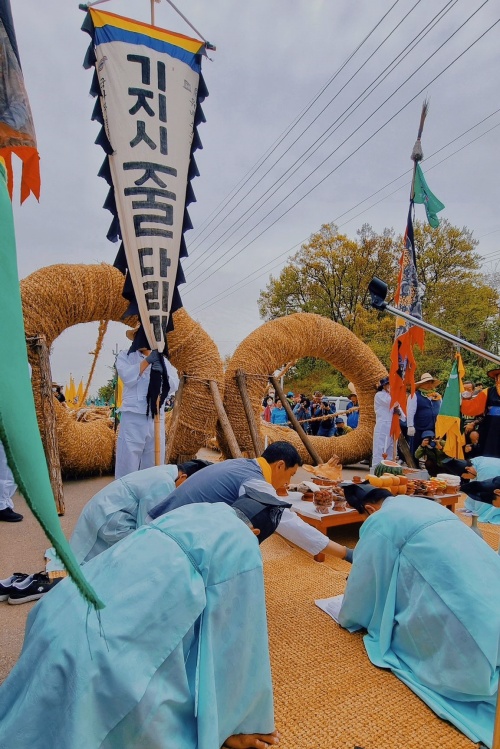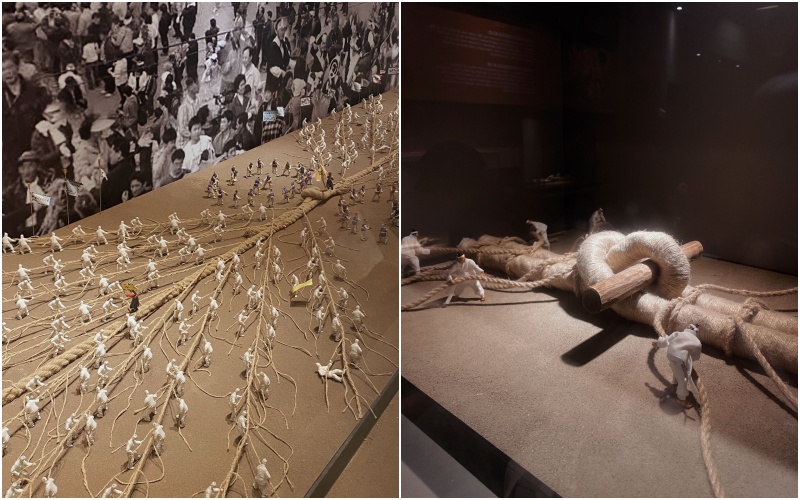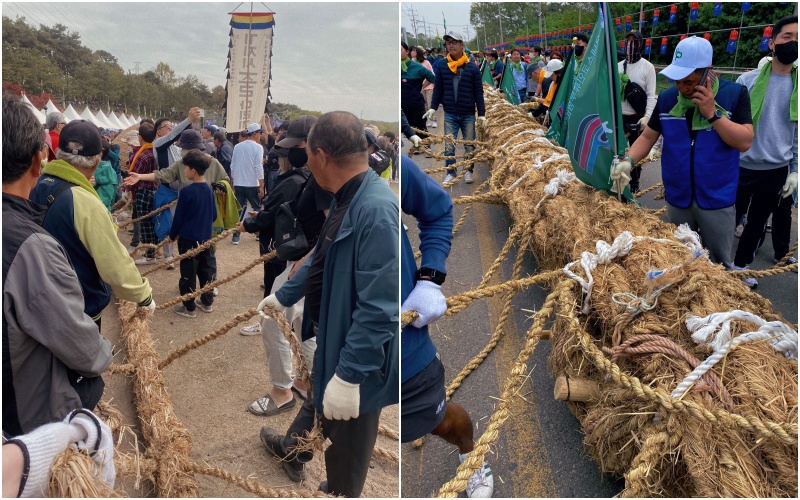- 한국어
- English
- 日本語
- 中文
- العربية
- Español
- Français
- Deutsch
- Pусский
- Tiếng Việt
- Indonesian
By Honorary Reporter Martina Marrandino from Italy
Photos by Martina Marrandino
The Gijisi Juldarigi (Tug-of-War) Folk Festival dates back about five centuries. Held every year in the peaceful village of Gijisi-ri in Dangjin, Chungcheongnam-do Province, the event is a unique cultural legacy passed down over generations.
The government in 1982 designated the festival National Intangible Cultural Heritage No. 75 and UNESCO in 2015 named it an Intangible Cultural Heritage of Humanity. The villagers cheerfully participate in the ceremonies and games to wish for a good harvest and prosperity.

This is a scene from the festival's opening ceremony.
I attended the festival from April 22-23. On the first day, I visited the Gijisi Juldarigi Museum and learned about the history of the traditional tug-of-war and the rope manufacturing site to see how the rope is made. The rope was 200 m long and 1 m wide (1.8 m at the heads) and weighed around 40 tons. How amazing that this custom has been passed down over generations, as well as the care and attention that goes into making the rope used in the ceremony.
After visiting the museum, I explored the festival and was impressed by the celebratory mood in approaching the main playground. The sound of traditional music and smell of delicious street food filled the air. I watched performances of the traditional folk music pungmulnori and a taekwondo demonstration.

On the left is a miniature replica of the main tug-of-war at the festival and on the right are the two heads of the rope joined with a wooden stick.
The main event was on the second day. I participated in the tug-of-war and games. Each team gathered and pulled a rope for about 1 km before the game began. Despite the weight of the rope, my passion and excitement kept me going. As my team reached the heart of the festival, we tied the two heads of the rope with a wooden stick and separated the main rope into different branches to mark the start of the event. The tug-of-war is played with two teams for three rounds.
I noticed the sense of community and unity among the participants despite the competitive nature of the game. What makes the festival unique is its promotion of a sense of community and unity rather than determining a winner or loser. Yet there is no real loser as whichever team wins, the result is positive. Victory by the "male" side is said to bring peace to the country, while that by the "female" side attracts prosperity. Our team lost, but my participation in this tradition was a reward for me.

Participants drag the rope for the main tug-of-war to the main courtyard.
Overall, my unforgettable experience at the festival allowed me to immerse myself in a tradition I never knew about and connect with a community who values this unique tradition. I will definitely visit this event again next year.
msjeon22@korea.kr
*This article is written by a Korea.net Honorary Reporter. Our group of Honorary Reporters are from all around the world, and they share with Korea.net their love and passion for all things.